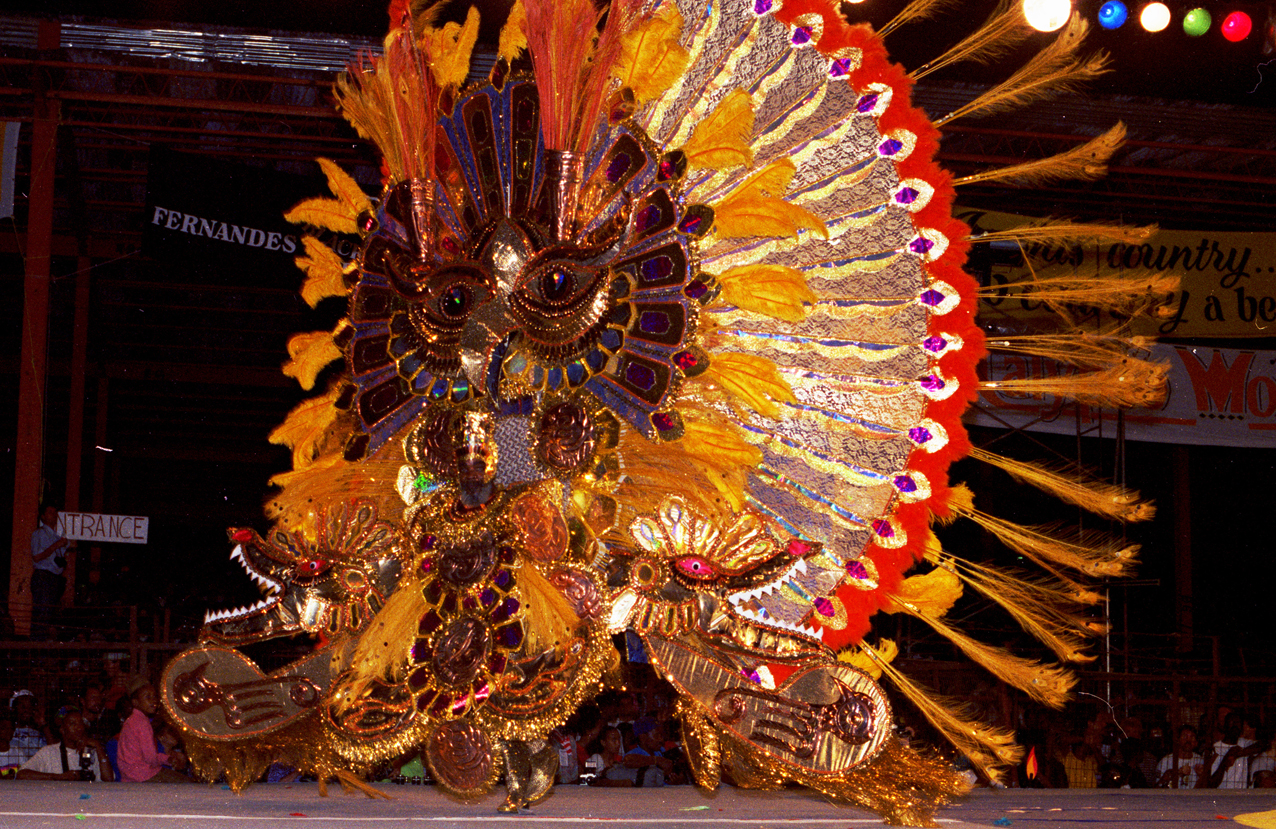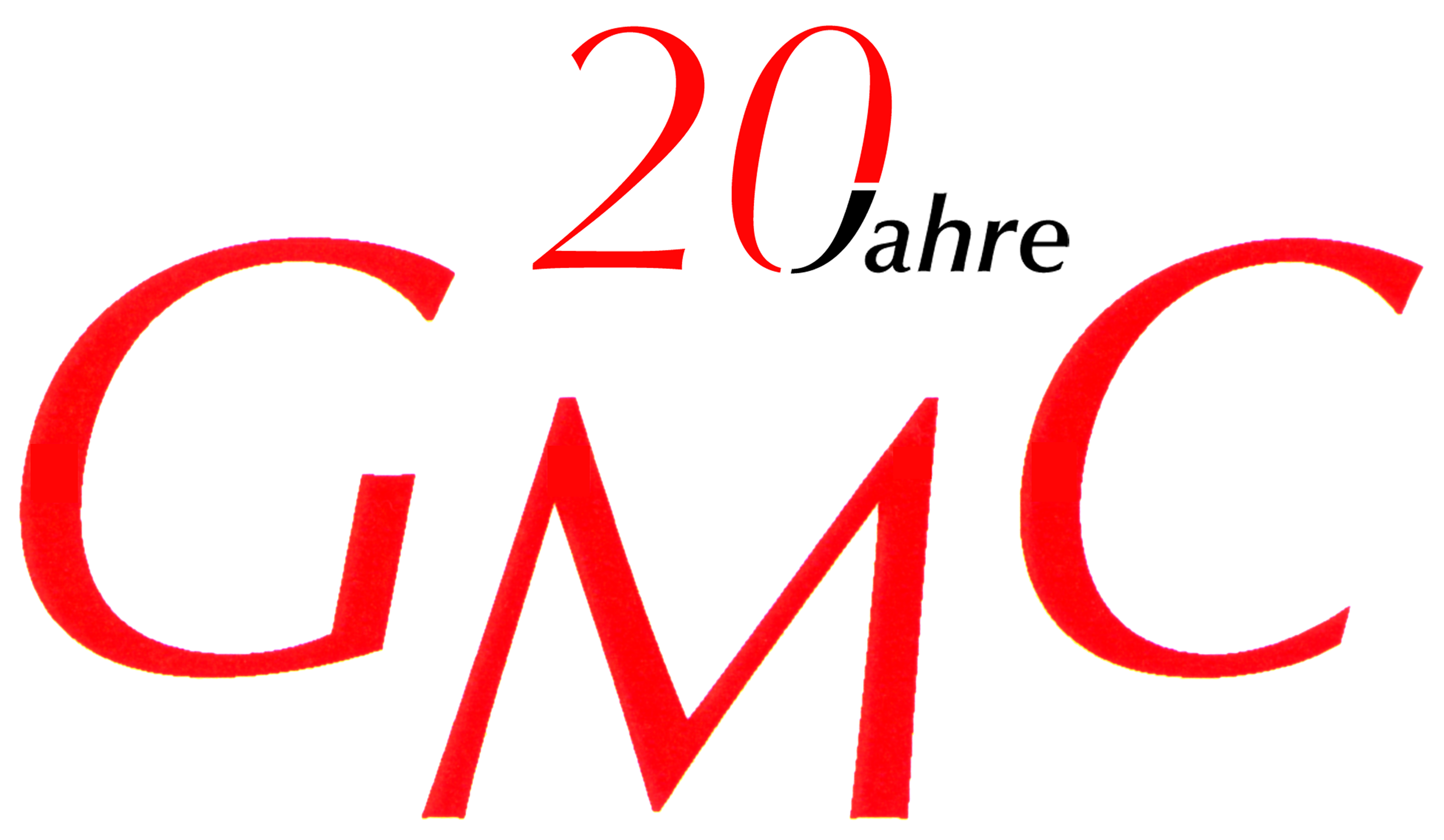
Let’s stay a little longer in the Caribbean. At the end of the 80s, I traveled for seven weeks from Barbados via St. Lucia, St. Vincent, Grenada and the Grenadines down to Trinidad and Tobago off the coast of Venezuela, i.e. through the entire Westward Islands. The highlight was the carnival in Port of Spain. What started in 1777 with the French immigrants in Trinidad and was reserved for a colonial minority, developed into a musical protest movement after the liberation of the slaves. Thus, the carnival in Trinidad and Tobago is for many the event that has become the purpose of life. It is celebrated in ecstatic joie de vivre, spurred on by hot calypso sounds.
For several months, an entire family is busy preparing for the costume creations and the parade. In addition to glamour, prestige plays a major role; the family’s fame and prestige increase considerably when a queen or king of the carnival can be added to the family chronicle. To be there is everything, to win is even more beautiful. Long before the parades, the favorites among the steel bands are determined in elimination procedures. Not only the playing virtuosity counts, also the provocative originality of the lyrics is evaluated and awarded, because calypso knows no taboos. Everything is allowed what pleases and arrives.
Even after the slave era, the calypso remained the satirical and also cynical mouthpiece of the oppressed. The lyrics of the singer-slaves were peppered with socially critical undertones and insurrectionary, political slogans. Then, at last, come the three magical days of steel drum parades through downtown Port of Spain, their sound setting the movements of the drifting dancers to a swinging rhythm with eruptive force, transforming Queens Park Savannah into a seething witch’s cauldron. In the process, the dancers hugged each other close to the skin and rubbed against each other tantalizingly and lightly clothed. The girls at that time had fun to dock in pairs from the front and from behind, to take you in the sandwich and to rub against you with heated bodies. I have rarely seen such lewd and erotic dancers.
This is how you learn to dance in a flash and move rhythmically to the hot calypso sounds. And this happened, as unbelievable as it sounds, in an environment that is as Catholic as it is Muslim and Chinese, because Trinidad is a melting pot of all these and many Caribbean and Latin American nations that live together peacefully on an island no larger than the canton of Bern. In 1833, tens of thousands of Indian contract workers also arrived on the southernmost, small Caribbean island off the coast of Venezuela, and since 1962 the island, which includes the neighboring island of Tobago, has been independent. Trinidad owes its name to Columbus, who remembered the holy trinity, the Trinity, when he saw the three mountain peaks. When Columbus arrived in 1498 on his third voyage, there were two Indian tribes living there, which were wiped out within a few years of the Spaniards‘ arrival. But back to Carnival and Calypso, to which Trinidad’s folklore owes so much.
Thus, long before the opening of the carnival, the best steel bands are chosen in relentless elimination procedures, which are allowed to participate in the parade. However, it is not only the pure musical virtuosity on the sound instruments welded together from gasoline barrels that counts – much more important are the cheeky, provocative lyrics, because calypso knows no taboos either when singing or playing or when dancing. Anything that goes down well and pleases the strict jury is allowed. The lyrics have always been peppered with socially critical and rebellious political tones, and this tradition continues to this day with much wit and charm. The band’s motto usually also determines the choice of costumes. Here, too, an enormous amount of imagination and creativity is involved, because a band, no matter how excellent, has no chance of making it to the final round anyway without original costumes. The graceful glittering robes exceed the body size by several times. This daring gigantism can only be accomplished with sophisticated technology and elaborate landing gear. For several months, entire family clans are busy making the costume creations and mythical creatures.
It is already midnight before the start of the carnival, which begins, as it does here, at four in the morning with the opening parade. Time drips by and minutes turn into hours. Alcohol is already flowing and will continue to do so for the next few days. Finally the time has come, everything is streaming outside, the narrow streets lined with tropical bushes are flooded by a pulsating stream of people moving towards the city center and epicenter of the carnival. Apart from glittering eyes and garishly painted faces, not much can be made out in the darkness just before sunrise. Diesel engines roar abruptly: The first semi-trucks start moving and join the stream of people creeping forward. On top of them, 20 to 30 steel drums and other instruments are united and large towers of loudspeakers are set up, whose sound, with eruptive power and hurricane-like bass vibrations, captures the movements of those drifting in the stream and sets the mood for a swinging rhythm.
From all directions, the steel bands converge on Queens Park Savannah, transforming it into a seething cauldron of witches. The silhouettes of the parade ramp and grandstands stand out in the dawn. Stands are set up all around, dazzling booth magic beckons, and everywhere the loudspeakers boom to the hilt. An indescribable cacophony that makes you lose your hearing and sight. In the afternoon, the bands and their costumed entourage parade behind them through the streets of Trinidad and up to the grandstands in Queens Park Savannah, where the jury is also seated and the hawsers parade down an alley between the grandstands.
Now you can see the gigantic, filigree, magnificently glittering and fan-like swinging works of art, which are decorated with thousands and thousands of glittering sequins, especially well. The giant fan and wing-like birds of paradise flutter rhythmically dancing through Trinida’s streets. A city out of control! But despite all the anarchy and the apparent dissolution of all laws, the precise timing of the end of the carnival seems incredible: As if swept away by a thunderclap, the spook dissolves at midnight after two intense days and nights.
On a second sailing trip from Grenada to Trinidad, which I organized for some friends, the carnival in Trinidad swept us away in such a way that we wanted to bring it to Zurich. And we succeeded, thanks to the Trinidadian percussionist on board the schooner. Ralph R. and his wife Angi, both passionate about playing the steel drum, and Ralph, who also taught several steel drum bands and children’s bands in Zurich, were the ideal candidates to bring the most famous calypso musician Mighty Sparrow on board. Through Ralph’s contacts we were able to invite Mighty Sparrow, the eight-time „King of Calypso“ to an exclusive gala concert at the „Hotel International“ in Oerlikon. For this we arranged an open-air at the market place in Oerlikon with eight Stelldrum bands the day before, on a Saturday.
Thanks to the cooperation with the „British West India Airlines“ (BWIA), which flew new to Zurich at that time, we were able to fly Caribbean top chefs to Zurich during six weeks before the „Calypso & Steeldrum Festival“, to provide all fresh ingredients and plenty of tropical decoration, to offer Caribbean flair, tropical cocktails and delicious exotic specialties and dishes at the „Hotel International“ in Oerlikon. Through the „Calypso & Steeldrum Festival“ I was allowed to cooperate with Roger Schawinski’s „Radio 24“ and was his guest for an interview and a special broadcast. Also at „Radio DRS 3“, which made a one-hour program about the Calypso from Trinidad and Mighty Sparrow, I cranked up the promotion track strongly.
In addition, Frederic Dru from „Radio Tropic“ was also interested in really celebrating this event. Swiss Television was inspired by the Mighty Sparrow concert and the Caribbean for their first travel show, as „SRF“ travel editor Kurt Schaad and the music editor of Swiss Television had freaked out at our gala concert. Although we had to seat people for fire regulations, people soon stood up, clapped, sang and danced and so we quickly cleared the chairs away. There was a bomb atmosphere and it was definitely the craziest concert ever held at that venue.
Equally enjoyable was that it meant I started working at „Radio Tropic“ on a voluntary, unpaid basis and then soon produced my own travel show with the airlines, tour operators and tourist boards and had complete freedom to do so. What a brilliant experience! I was able to do two-hour specials on Australia, Africa and the Caribbean on the commercial-free radio station, and two years later I had the opportunity to produce shows at „Radio Kanal K“ as well.
The station in the canton of Aargau, also known as a music and culture radio station, also gave me a lot of leeway and so, to everyone’s amazement, I invited the four cantonal party presidents to the studio for the hotly debated „Asylum Initiative“ of the SVP and moderated the debate with virtuosity. Also present were Gerry Müller, who later became mayor of Baden. The next protagonist was Andreas Glarner of the SVP from the Aargau municipality of Arni, who achieved media presence through his scandals in matters of migration policy (ban on veiling and minaret initiative). In addition, the two cantonal FDP and CVP presidents also came to the studio for a debate. This was my first highly political and at the same time high-profile interview with four top politicians on one of the hottest topics in Germany at the time. It was a very engaged and controversial discussion, which I, as the moderator, had a good handle on.
Through the cooperation with the British West India Airlines (BWIA) at the „Calypso & Steeldrum Festival“ in 1993 and later with the French airline „AOM“ I was able to fly frequently to the Caribbean and during one of these trips there was a side trip to Grenada, which I visited for the second time. There we received a special invitation to a breakfast on a US warship.
